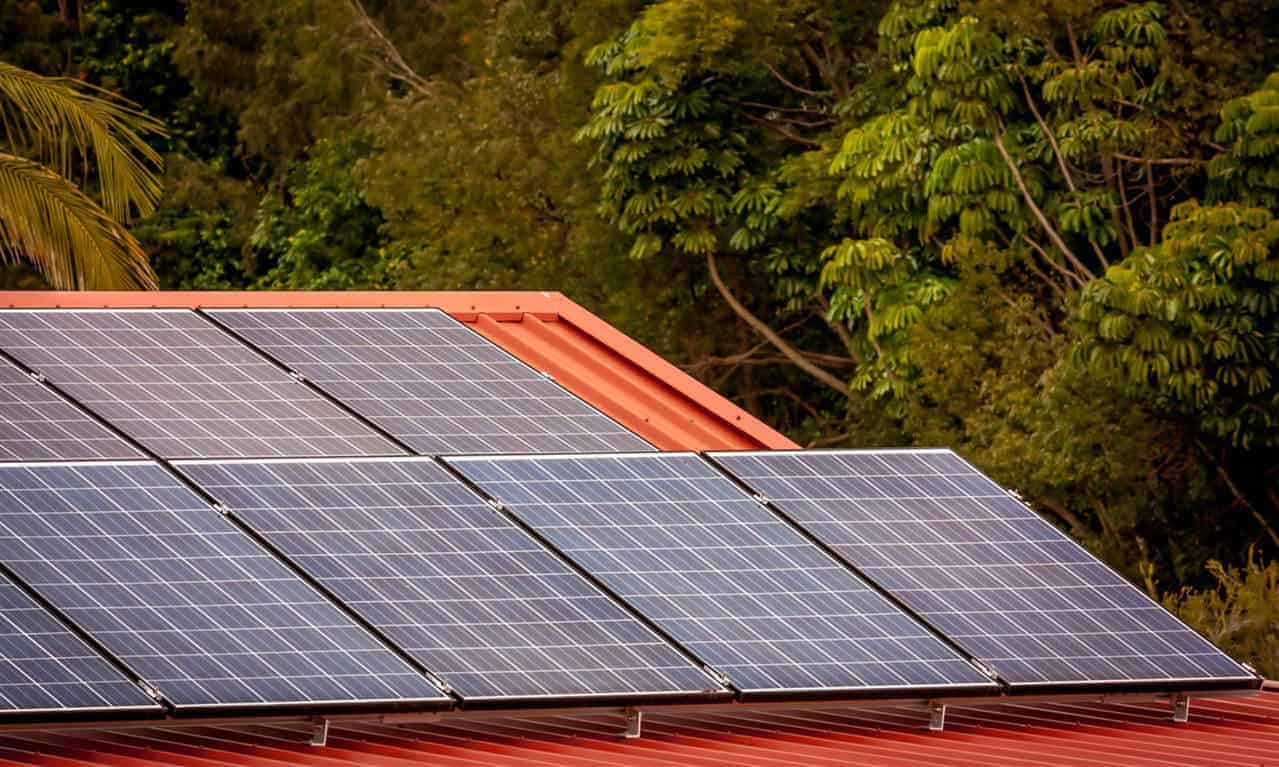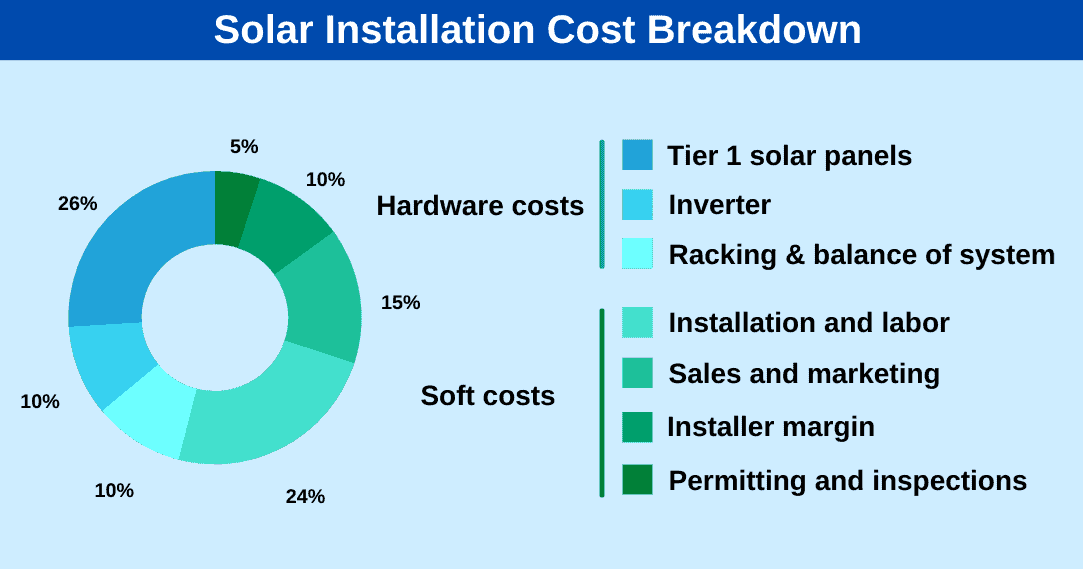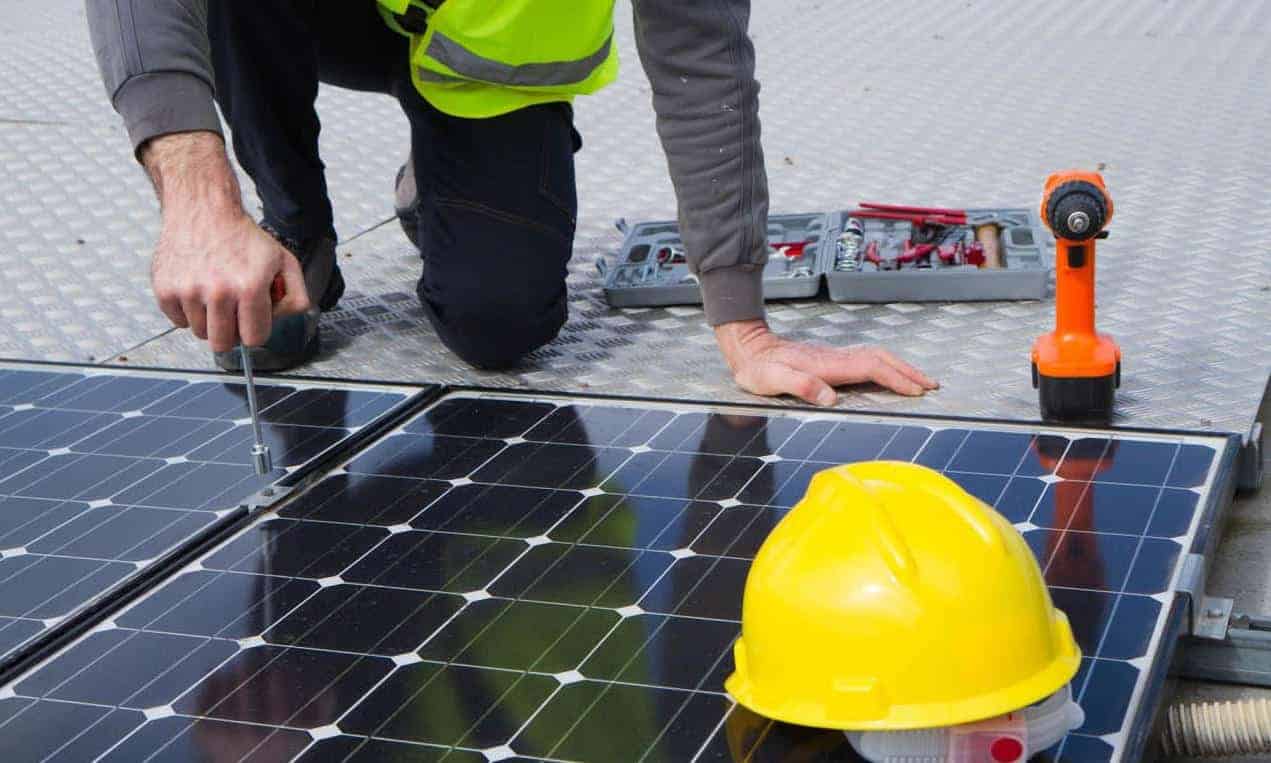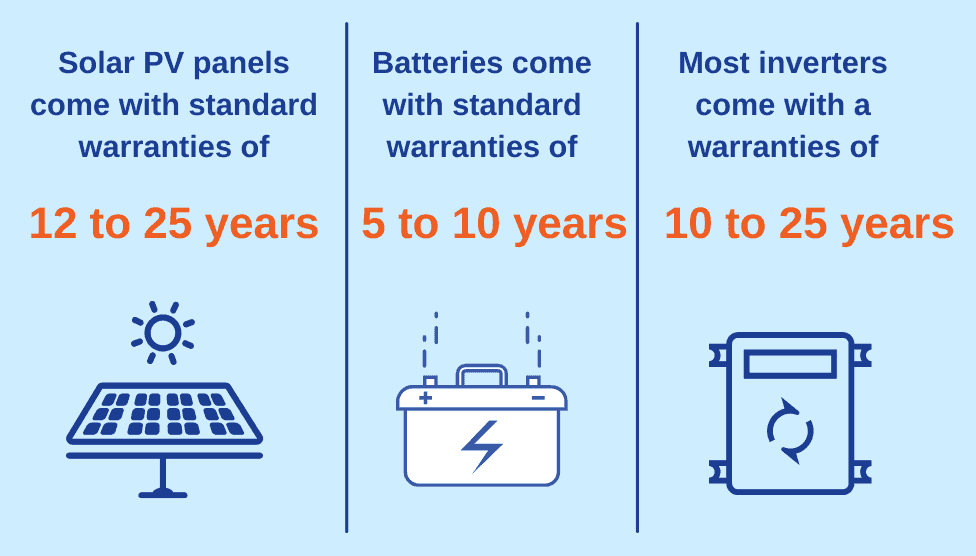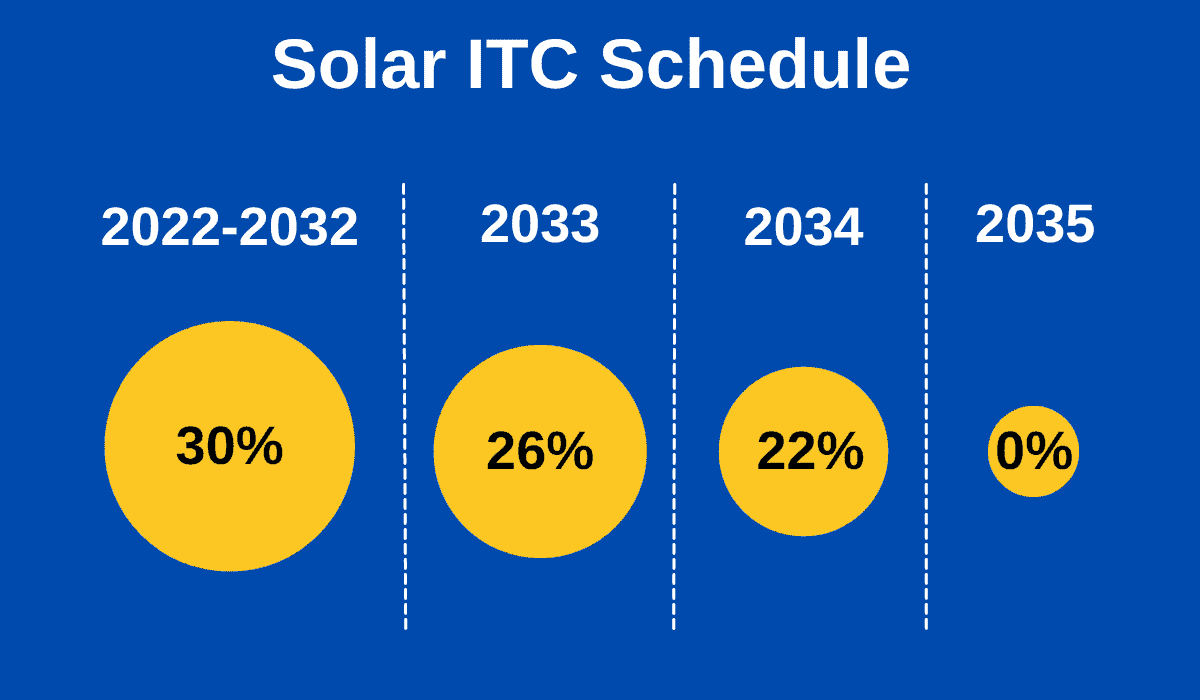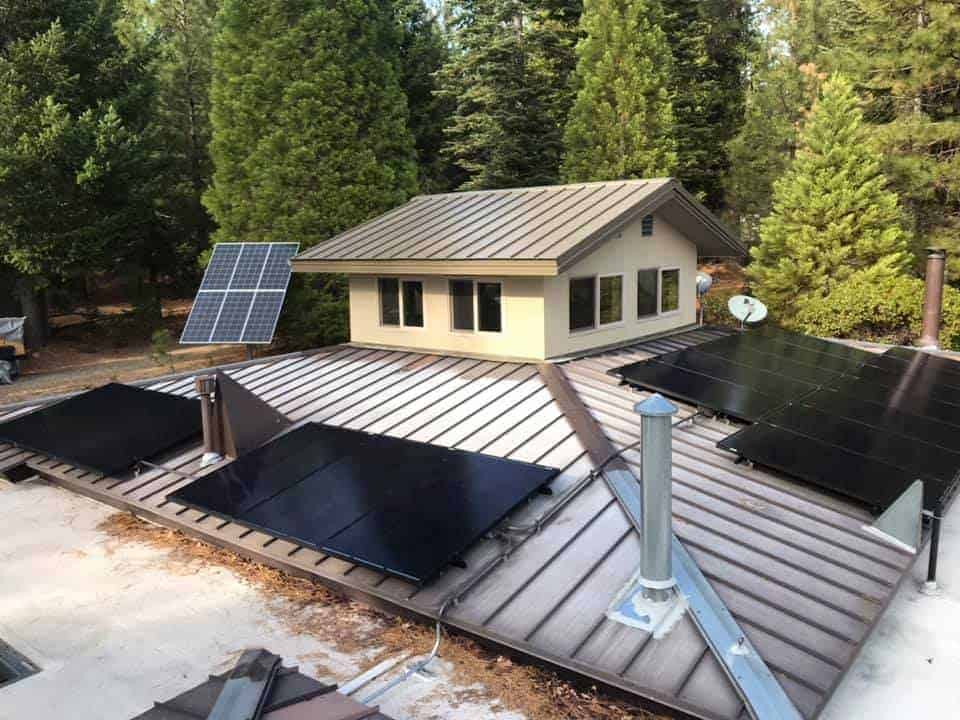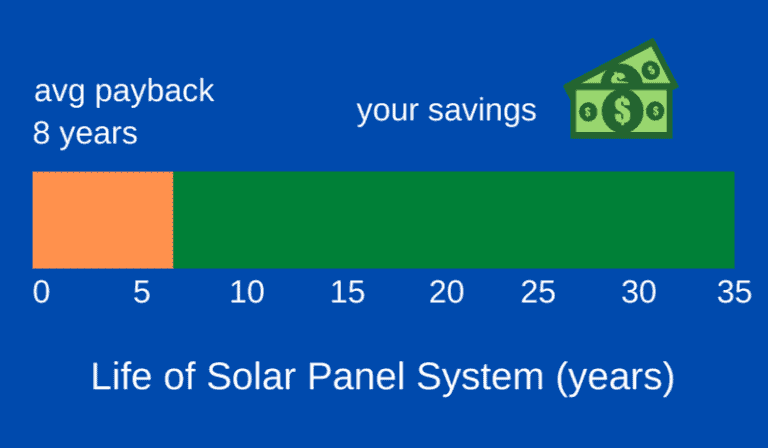I’ve been doing some research and looking at how much it will cost me to install a solar system in my home. It’s quite a complicated process to decide whether to go DIY or use an outside contractor, and some of the solar system prices I’ve been quoted have been pretty frightening.
So I decided to find out why and get the background I need to help me decide whether to buy solar and, if so, how to go about getting the very best value for money.
After lots of research, here’s my answer to the question, “Why are solar panels so expensive?”
I think you’ll be interested in my findings that despite what can be quite a high initial outlay, solar panels actually work out to be very economical and one of the best investments you’ll ever make.
How much does a solar system cost?
These days a typical home solar system costs between $3,500 and $35,000, with the average installation coming in at around $16,000. That’s a significant investment by anybody’s standards, so why exactly do solar systems cost so much?
Costs of production
Many different materials go into a solar panel, and lots of complicated and expensive production processes go into their manufacture. For example, the central element of a solar cell is made out of silicon. Silicon is a widely available substance, but refining it to a stage where it can be used in a solar cell is a complicated process requiring precision technology.
And a solar system doesn’t just consist of solar panels. You’ll need an inverter to convert the electricity generated into a usable form. And if you want off-grid access to the power you generate, you’ll need some batteries, which are expensive because they use rare minerals and elements like lithium.
When you add copper cabling and all of the other glass, metal, and human-made compounds that go into a solar system, it becomes clear that material costs are significant and unavoidable. So materials costs are a large part of the price, but typically they make up less than half the total cost of a solar installation. That astonished me since I guessed it would be much more.
It turns out that more than half of the cost of a home solar system is made up of installer fees and margins and expenses relating to having the system inspected and obtaining the relevant permits.
This means that if we can find a way to reduce installation costs, then we can make substantial savings on our solar systems.
How to reduce solar installation costs
The most flexible part of your solar system cost relates to the installation and other contractor expenses, and here are some steps you can take to reduce these and make your solar system less expensive.
Comparative quotes
it might seem obvious, but it pays to not just go for the first solar energy quote you receive. Instead, you should look at several contractors operating in your area and ask friends for recommendations wherever possible.
Traditionally the most expensive providers are the one-stop-shop guys who deal with every aspect of the purchase and installation of your solar system. Sure, this is the most convenient way to do it but you can expect to pay a considerable premium for that convenience.
You can save a lot of money by sourcing the solar system hardware yourself and then hiring a contractor for the installation only.
Do It Yourself
One way to drastically reduce the cost of your solar system installation is to do it yourself. This might seem daunting, but there’s a wealth of information out there taking you step-by-step through the basics of installing a solar system.
Sure, you want to get everything right, so this is only a step you should take if you are confident in your abilities, but be aware that it will make a massive reduction in the cost of your system.
Get the right size solar system
when you’re buying a home solar system, it’s an easy mistake to get something that is too big for your needs. Thankfully there is a straightforward process you can use to find out how much energy will need to power your home with solar. Perform this exercise and ensure that you get quotes for a system that is big enough but not too big.
Warranty and service contracts are important
It would be a mistake to assume that every part of your solar contractor’s costs should be open to reduction. There are some reasons why you might want to pay a little bit extra for your peace of mind.
For example, it’s important to get good manufacturer’s and installer’s warranties covering you in case of system problems or issues. Sometimes it’s worth paying extra for a comprehensive warranty and dependable maintenance and support service. Check all of the paperwork very carefully.
Don’t forget tax credits and incentives
One reason that the cost of your solar system can seem expensive is that it doesn’t take into account the excellent tax credits and incentives that are still available for home solar installations.
Federal Incentives
The government offers a federal investment tax credit of 26% for home solar systems. This means that you can claim back a large part of the money you spend on your solar system, reducing your costs. This tax credit is a significant incentive, and it’s important to note that it was reduced to 22% in 2023, after which it’s gone.
Taking advantage of the federal investment tax credit is a great reason not to delay if you’re thinking of installing solar.
Local Incentives
As well as the federal tax credit, many states and local utilities offer rebates, tax credits, and other incentives for installing solar. These work in addition to the federal tax credit so it’s essential to find out just how much you can save in total. Luckily there’s a website that tells you every incentive that is available in your region.
Then when you’ve figured out how much you can save with incentives, take this total off the price of your system to get an adjusted number that represents the actual cost.
Understand that it’s a one-time investment
Another reason why solar panels seem so expensive is that they don’t work in the same way as your regular energy bills. Your regular electricity bills are usage-based, and so while they may seem high, there is no fixed investment. You just pay high energy costs, cycle by cycle, year by year.
But with solar power, it’s different. You make a significant one-time investment and then reap the benefits of reduced electrical bills for many years to come.
The average life cycle of a solar system is in the region of twenty-five years. Hence, you need to find a way to spread out your initial system investment over time and compare it to those high electric bills that you’ll keep getting without the help of solar-generated electricity in your home.
One of the best ways to do this is to calculate the payback period of your investment.
How to calculate the payback period
the payback period of a solar system is simply a way to work out how long it takes to get back your initial investment in the system through the savings you make on your electricity bills.
Here’s how we calculate it.
COST OF SOLAR SYSTEM – INCENTIVES AND TAX CREDITS = INITIAL COST
REGULAR ELECTRICITY COSTS – POST SOLAR ELECTRICITY COSTS = ANNUAL ENERGY SAVINGS
INITIAL COST ÷ ANNUAL ENERGY SAVINGS = PAYBACK PERIOD
the great news here is that the average solar system payback period in the US is around eight years. This means that after eight years, you will have paid off your initial investment, and for the rest of the working life of your solar system (up to 25 years, remember), You will enjoy huge savings on your energy costs for free!
Are you still asking, ‘Why are solar panels so expensive?
So, why are solar panels so expensive? They’re Not
So I found some significant material costs in solar systems. But there is also a large installation cost element that a careful buyer can significantly reduce by shopping around, doing research, or installing the system themselves.
Then the initial solar investment can be further reduced by federal and local tax rebates and incentives.
After that, whatever system setup costs remain need to be spread across the life of the solar system by working out the payback period. The findings are that most solar systems pay themselves off only 1/3 of the way through their working life.
So in the long term, solar systems are most definitely not expensive. They are, in fact, incredibly cheap, and it’s a great idea to have one installed, especially while the government is offering you such good incentives to do so.
If you have any comments or questions about the price of solar systems, then please share them with others.

